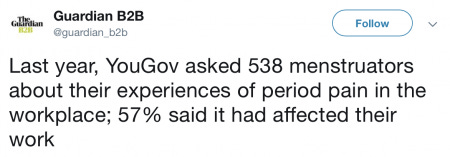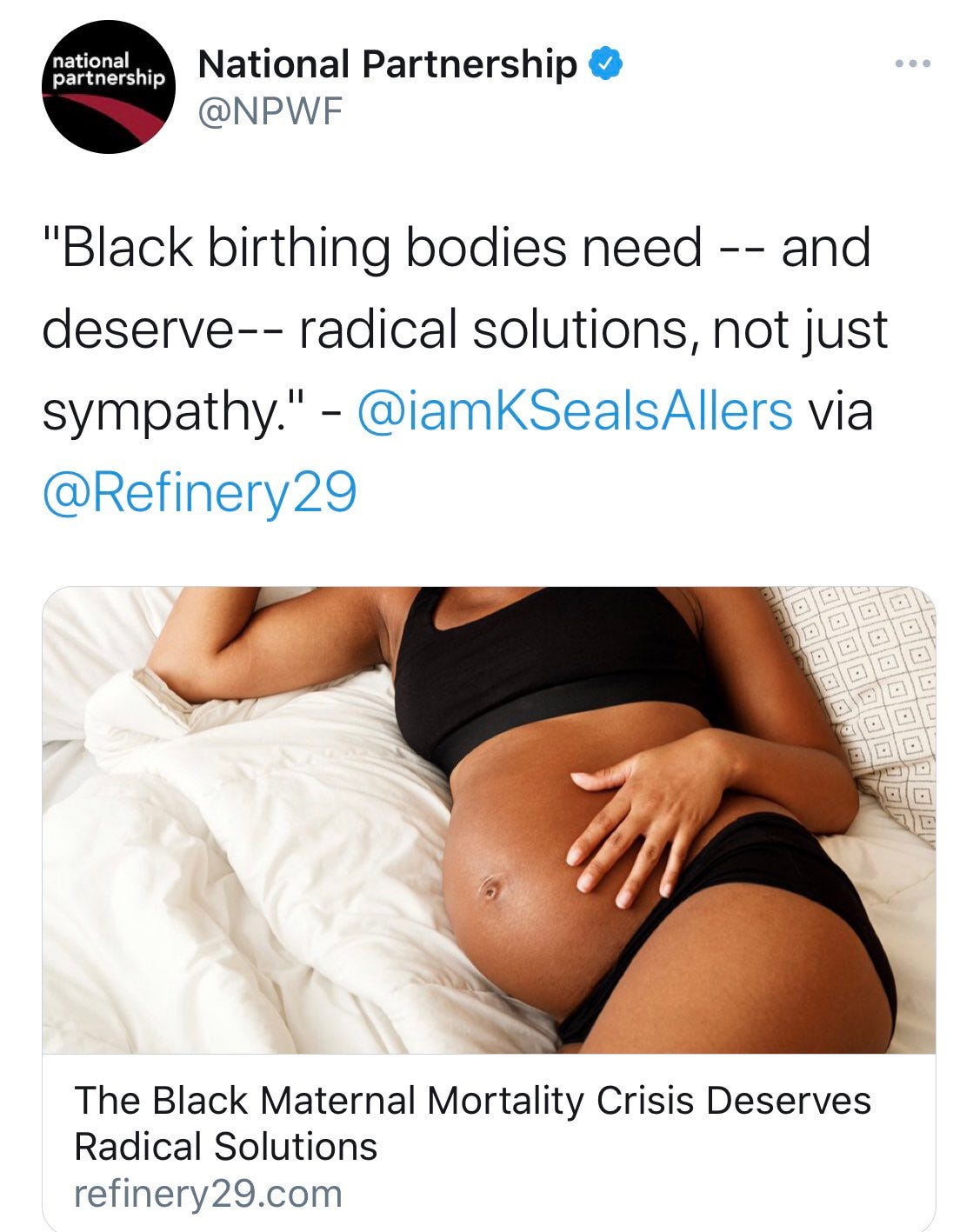I’ve recently noticed an interesting connection between disparate groups who face entrenched, systemic discrimination and violence on account of particular anatomical characteristics, and wondered whether there might be some benefit in forming an alliance between these groups in order to more effectively advocate and campaign for their rights?
The groups are as follows:-
1. Menstruators
Menstruators are people who regularly shed the lining of their uterus, usually on a monthly basis. This group face period poverty and period stigma, and can face education, employment and healthcare inequality on account of their physiology.
2. Individuals with a Cervix
Individuals with a cervix face healthcare inequalities partly predicated on inadequate data collection, research and funding for people with this particular anatomy.
3. Pregnant People
Pregnant people face obstetric violence, health inequalities, employment disadvantage and employment discrimination, as well as criminalisation when they try to exercise their reproductive rights or maintain their bodily autonomy.
4. Birthing Bodies
Interestingly, people whose bodies give birth to other people appear to suffer many of the same forms of discrimination and violence which are suffered by the group pregnant people.
5. Chestfeeders
People who express milk through their nipples to feed babies and infants face employment discrimination and often also face stigma and prejudice because of this bodily function.
6. Uterus Holders
People with uteruses and, interestingly, people who have had their uteruses removed, face discrimination and violence on account of many factors shared by several of the other groups listed above. In particular, forced hysterectomies are only performed on people whose bodies have uteruses. These people then become people who used to have uteruses.
7. People with Vaginas
People with vaginas suffer epidemic levels of violence as well as endemic and entrenched discrimination. Vagina owners seem particularly vulnerable to sexual objectification, abuse and exploitation.
Over 80% of all victims of sexual assault have a vagina.
Nearly all victims of rape have a vagina.
Over 80% of victims of sex-related murders have a vagina.
71% of all victims of human trafficking globally have a vagina.
Vagina owners also suffer from employment discrimination and healthcare inequality.
It is worth noting that, perhaps coincidentally, pregnant people, birthing bodies, cervix and uterus havers are also people with vaginas. The crossover here is quite remarkable.
8. Vulva people
(sorry can’t get rid of this number 9, just have to leave it there, baffled shrug)
Vulva people seem to share with vagina havers an almost parallel experience of discrimination and violence. Furthermore, almost without exception, vulva people have vaginas.
9. Menopausal people
People who used to menstruate but no longer do so, usually on account of reaching late middle age, face healthcare, employment and pension discrimination.
In addition, these people face ingrained and systemic enmity, hostility and prejudice, exemplified by the language used to refer to older post-menstruators.
Examples of such language include the terms witch, hag, crone.
10. Surrogate Hosts
People who sell their eggs and become surrogates commonly live in impoverished conditions and are often coerced.
These people face healthcare inequality and healthcare violence.
After some initial research, I realised with some shock that surrogate hosts are also people with cervixes, uteruses, vaginas and vulvas, and are pregnant people and birthing bodies.
It was this realisation that finally forced me to think that the connections could not be entirely coincidental.
Something links these disparate groups together.
But what?
Forming an alliance
Joining together with other groups who face similar discriminations increases the campaigning power of a movement, and amplifies the voices of all its members.
This has worked for example for the Disabled Rights movement, which includes people with all sorts of distinct physical and psychological disabilities, but who have one thing in common - they face discrimination on account of disability.
I wondered whether the same logic might apply to the groups listed above, all of whom face discrimination and violence on account of their anatomical specificity.
Menstruators and the menopausal, vagina and vulva owners, uterus havers and people with cervixes, pregnant people, surrogate hosts, birthing bodies and chestfeeders - all of these groups face discrimination predicated on their particular anatomical characteristics and practiced upon the bodies which exhibit those characteristics.
Could it be that these different groups of characteristics are in some way related?
If so, surely it would make sense for these groups to seek to form an alliance. This would allow them to work together to fight the prejudices and discriminations which they face, and eliminate the violence to which they are subjected.
But to form an alliance, these groups need to identify what it is they have in common, other than the fact that they face discrimination and violence.
Many groups face discrimination and violence. But whilst all oppression can be seen in terms of power relations, stemming from the urge to dominate, subjugate and exploit others in order to increase the power of the dominator, it is neither realistic nor feasible to attempt to fight all oppression, on whatever grounds or bases, with one giant, all-joined-together campaigning effort.
This is why campaign groups exist for specific interest groups. It is why, for example, BlackLivesMatter is not ‘All Lives Matter’.
Campaigning groups need to be not too broad, but equally they must not be too narrow. The black rights movement would have much less impact if divided by geography or ethnicity. Equally, the disabled rights movement, made up of myriad separate interest groups, is more effective as a joined-up movement.
Same goes for trade unions.
What is needed is an ‘umbrella’ under which disparate but intrinsically connected groups can gather, acknowledging their common cause without denying their differences.
What unites us?
I tried to think of a common, unifying characteristic which is shared by all 10 of the groups above, and found that there is indeed one factor that stands out above all others.
It is that all of these groups face discrimination and violence on account of particular anatomical characteristics, many of which are (or were at some time) shared in common amongst all or most of the groups.
Furthermore, the discrimination and violence directed at these groups tends to be actually practiced upon the body parts, or directed against the bodily functions, that mark people out as members of these groups.
What shall we call our united group?
Having found the common link between the groups, I then looked for a term to describe this commonality.
At first this was challenging.
As almost all members of all of the above groups have XX chromosomes (with the exception of a tiny number of people with differences of sexual development - I believe less than 0.005%) , and as almost all are born with bodies with the capacity to produce large gametes, I thought perhaps of calling the group ‘XXLG’.
#XXLG had the advantage of being shorter and snappier than an acronym that includes the first letters of each of the 10 groups -
#MCHPPBBCFUHPVVPMPSH is just not user-friendly.
But a campaign name that refers only to chromosomes and gametes could be inaccessible to vulnerable people such as those with learning difficulties, or English as a second language, and perhaps also difficult for older people and people with limited knowledge of their own chromosomal/internal anatomy.
In the end I decided to do some historical research and see if I could find any instances of the use of particular terminology to link people with the disparate anatomical characteristics of each of the 10 groups, and was excited to discover that indeed, a particular term has been in existence since the very dawn of human language.
Plentiful evidence exists of early references, in multiple texts, dating back at least to the Sumerian era and continuing thereafter, using a catch-all term that groups together menstruators, vagina havers, people with cervixes, birthing bodies etc - using only a single word.
That word is ‘Woman’.
I’m not sure where this term originated, but it seems to have become popular and widespread over the course of many centuries, and has its own translation in every language and in every corner of the globe.
And it is not only in the distant past that this word was in common usage.
I've come across recent examples - as recent as the 1970s - where an alliance of menstruators and the post-menopausal, pregnant and birthing bodies, surrogate hosts, chestfeeders, vagina and vulva owners, cervix havers and people with uteruses - by joining forces - were able to mount successful campaigns and win voting rights, the right to bodily autonomy, reproductive rights, plus a wide range of equalities, protections and safeguards for all of their group members, under the shared banner of ‘Women’s Liberation’.
I know that it may seem a retroactive step to go back to using a term whose roots stretch so far back in history, and it may be argued that to do do is regressive and resistant to change, but I disagree.
I believe that we can and should listen to and learn from history.
Not everything old is outdated and past its sell-by date, and not everything new should be unquestioningly embraced.
I call for all members of groups 1 - 10 to form an alliance.
I suggest that we call ourselves Women, and that we name our movement Women’s Liberation.
In solidarity we are stronger.
Together our voices will be amplified.
Together we can fight discrimination.
Together we can eliminate violence.
United we can make change.
Divided we fall.
‘Women’ of the world - we are all unique individuals.
Each of has bodies as different and unique as our personalities.
Some of us are black, some white; some Muslim, Jew or Catholic, multifaith, non-believer.... Some disabled, some able bodied. Some rich, others poor. Some gay, others straight.
Let’s recognise those differences.
And let’s unite in common cause, under the banner of our shared anatomical particularity.













